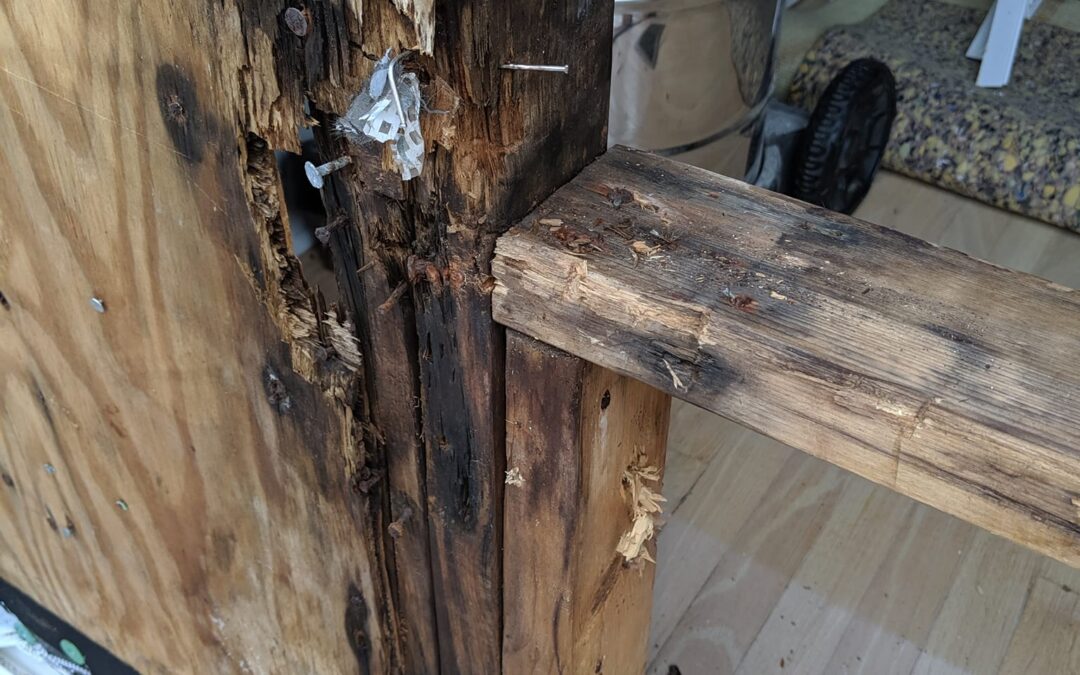
Signs of Rotten Wood: When It’s Time to Replace Your Home’s House Bands
Introduction to House Bands
The structural integrity of your home depends heavily on key components, one of the most critical being the house bands, also known as rim joists. These vital elements support the framework of your house, creating a sturdy foundation for walls and floors. However, over time, moisture, pests, and neglect can lead to wood rot, compromising their functionality. Recognizing the signs of rotten wood and understanding when to take action is essential for maintaining a safe and secure home. This guide explores the causes of wood rot, warning signs, potential risks, and the process of replacing rotten house bands.
Common Causes of Wood Rot: Understanding Why Your House Bands May Need Attention
Wood rot is a common yet underestimated issue that can wreak havoc on a home’s structural components. The primary culprits include moisture infiltration, poor ventilation, and pest infestations.
-
- Moisture Infiltration: Prolonged exposure to water is the leading cause of wood rot. Rainwater seepage, leaks from plumbing, or improper drainage systems can saturate the wooden components of your home. Over time, the moisture creates a perfect environment for fungi to thrive, leading to decay.
- Poor Ventilation: Areas with inadequate airflow, such as crawl spaces and basements, often retain moisture. This trapped humidity accelerates the growth of rot-causing fungi, compromising the durability of house bands.
- Pest Infestations: Termites, carpenter ants, and other wood-destroying pests feed on damp and decaying wood. Once these pests infest your house bands, they weaken the structure, making replacement inevitable.
- Neglected Maintenance: Failure to address minor leaks, cracks, or damaged siding allows moisture to penetrate deeper, increasing the likelihood of rot spreading to your house bands.
By addressing these causes early on, homeowners can prevent significant damage and reduce the need for costly repairs.
Warning Signs of Rotten House Bands Every Homeowner Should Know
Spotting the signs of wood rot early can save you from extensive damage and expensive repairs. Here are the most common indicators:
- Visible Damage: Discoloration, cracking, or flaking on the wood’s surface often signals rot. Soft, spongy wood that crumbles under pressure is another telltale sign.
- Sagging Floors: House bands provide essential support for your floors. If you notice uneven or sagging flooring, it could indicate compromised house bands.
- Persistent Musty Odors: A damp, earthy smell in basements or crawl spaces might suggest hidden wood rot.
- Pest Activity: Finding termite trails, sawdust-like residue, or actual pests near wooden areas often points to rot.
- Structural Gaps: Gaps between the foundation and house bands or misaligned walls can be caused by wood that has deteriorated beyond repair.
Being vigilant about these warning signs and conducting routine inspections can help you catch problems before they escalate.
The Hidden Dangers of Ignoring Rotten Wood: What’s at Stake
Ignoring rotten wood doesn’t just jeopardize your home’s structural integrity—it poses significant safety and financial risks. Here’s what’s at stake:
- Structural Compromise: Rotten house bands weaken the foundation of your home, potentially leading to wall collapses or roof instability.
- Increased Repair Costs: Delaying repairs allows rot to spread, affecting adjacent components like floor joists and studs. What starts as a minor repair can quickly become a major renovation project.
- Pest Infestation: Wood rot attracts pests like termites and carpenter ants, further compounding the damage.
- Health Hazards: Rotting wood can promote mold growth, which may cause respiratory issues and allergies for household members.
- Decreased Property Value: Structural issues, including rotten wood, lower your home’s market value, making it less appealing to potential buyers.
Addressing wood rot promptly not only safeguards your home but also protects your family’s well-being and financial investment.
Assessing Damage: When Rotten Wood Repair Is No Longer Enough
Determining whether to repair or replace rotten house bands depends on the extent of the damage. Here’s how to assess the situation:
- Evaluate the Extent of Rot: Use a screwdriver to probe the wood. If it penetrates easily or the wood crumbles, the damage is likely severe.
- Inspect Surrounding Areas: Check adjacent components like floor joists and beams. Extensive rot in these areas often necessitates full replacement.
- Consult a Professional: Structural engineers or contractors can provide a thorough assessment and recommend the best course of action.
- Consider Longevity: Repairs may offer a temporary solution, but replacement ensures long-term stability and durability.
- Factor in Costs: While repairs may seem cheaper initially, they can lead to recurring expenses if the rot isn’t fully eradicated. Replacement may be the more cost-effective solution in the long run.
Understanding when repairs are insufficient helps homeowners make informed decisions about preserving their home’s integrity.
Replacing Rotten House Bands: What Homeowners Need to Know About the Process
Replacing rotten house bands is a complex but necessary process to restore your home’s foundation. Here’s what to expect:
- Initial Assessment: Contractors will inspect the damage, identify the source of rot, and provide an estimate for the replacement work.
- Temporary Support: Before removing the rotten house bands, temporary supports are installed to stabilize the structure.
- Removal of Damaged Wood: The compromised house bands are carefully removed, ensuring minimal disruption to surrounding components.
- Installation of New House Bands: Treated or rot-resistant wood is installed to ensure durability and prevent future issues.
- Preventive Measures: Contractors address the root cause of the rot, such as fixing drainage issues or sealing gaps, to protect the new house bands.
- Final Inspection: After installation, a thorough inspection ensures the new house bands meet safety and structural standards.
Replacing rotten house bands is a significant investment, but it’s crucial for maintaining a safe and secure home environment.
Conclusion
Rotten wood repair is a critical task for homeowners who want to protect their property and ensure their family’s safety. Understanding the causes, recognizing the warning signs, and knowing when to replace house bands can save you time, money, and stress. If you suspect wood rot in your home, don’t wait. Consult a professional to assess the damage and take swift action. Replacing rotten house bands is not just about repairing wood—it’s about preserving the foundation of your home and the memories built within its walls.
Contact Matt – Clammers with Hammers to inspect and replace your Rotten House Bands at 252-723-3757

